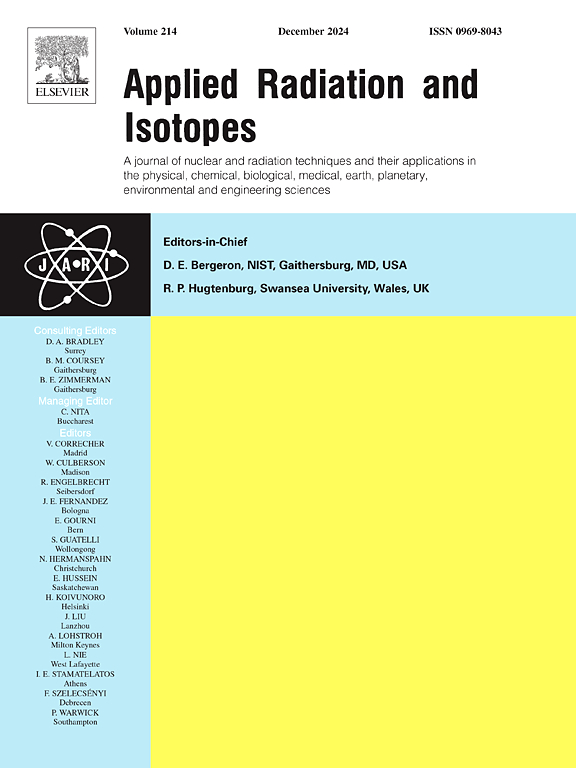核反应截面生成的分层系综生成模型
IF 1.6
3区 工程技术
Q3 CHEMISTRY, INORGANIC & NUCLEAR
引用次数: 0
摘要
准确可靠的核反应截面数据对核反应堆设计、核能开发和核安全评估至关重要。生成核数据的传统方法面临重大挑战,包括成本高、时间框架长、覆盖不全面。机器学习(ML)的最新进展为核数据生成提供了新的机会,但现有方法与实验数据的稀缺性作斗争,限制了它们生成高精度和广泛适用的横截面数据的能力。本文介绍了一种新的人工智能驱动的核反应截面生成方法——分层集成生成模型(HEGM)。HEGM结合了迁移学习、元学习、原型网络和生成对抗网络来解决稀疏数据的挑战并提高预测准确性。我们评估了HEGM在同位素16O和238U上的性能,并将其与传统的机器学习模型(包括k -近邻、随机森林和人工神经网络)进行了比较。实验结果表明,HEGM显著优于传统模型,与基线ENDF/B-VIII相比,均方误差(MSE)降低25%,平均绝对误差(MAE)降低20%,决定系数(R2)提高15%。0数据库和EXFOR实验数据。具体来说,HEGM使16O的MAE降低了28%,238U的MAE降低了15%。这些结果突出了模型优越的准确性和鲁棒性,特别是在实验数据稀疏的共振区域。HEGM的分层集成结构增强了预测性能,使其成为数据有限区域核数据生成的有效工具。这些有希望的结果表明,像HEGM这样的人工智能驱动的方法可以为传统的核数据评估方法提供强大的替代方案。未来的工作将探索进一步增强模型,包括扩展到更多的同位素和核反应,以及将HEGM与反应堆模拟模型相结合,以改进反应堆设计和核能研究。本文章由计算机程序翻译,如有差异,请以英文原文为准。
HEGM: Hierarchical Ensemble Generation Model for nuclear reaction cross sections generation
Accurate and reliable nuclear reaction cross section data are crucial for nuclear reactor design, nuclear energy development, and nuclear safety assessments. Traditional methods for generating nuclear data face significant challenges, including high costs, long time frames, and incomplete coverage. Recent advances in machine learning (ML) offer new opportunities for nuclear data generation, but existing methods struggle with the scarcity of experimental data, limiting their ability to generate high-precision and broadly applicable cross section data. This paper introduces the Hierarchical Ensemble Generation Model (HEGM), a novel AI-driven approach to nuclear reaction cross section generation. HEGM combines transfer learning, meta-learning, prototype networks, and generative adversarial networks to address the challenges of sparse data and improve predictive accuracy. We evaluate HEGM’s performance on isotopes 16O and 238U and compare it with conventional machine learning models, including K-Nearest Neighbors, Random Forest, and Artificial Neural Networks. The experimental results demonstrate that HEGM significantly outperforms traditional models, achieving a 25% reduction in Mean Squared Error (MSE), a 20% reduction in Mean Absolute Error (MAE), and a 15% improvement in the coefficient of determination () compared to the baseline ENDF/B-VIII.0 database and EXFOR experimental data. Specifically, HEGM achieved a 28% reduction in MAE for 16O, and a 15% reduction for 238U. These results highlight the model’s superior accuracy and robustness, particularly in resonance regions where experimental data is sparse. HEGM’s hierarchical ensemble structure allows for enhanced predictive performance, making it an effective tool for nuclear data generation in data-limited regions. The promising results suggest that AI-driven approaches like HEGM can provide a powerful alternative to traditional nuclear data evaluation methods. Future work will explore further model enhancements, including expanding to additional isotopes and nuclear reactions, as well as integrating HEGM with reactor simulation models to improve reactor design and nuclear energy research.
求助全文
通过发布文献求助,成功后即可免费获取论文全文。
去求助
来源期刊

Applied Radiation and Isotopes
工程技术-核科学技术
CiteScore
3.00
自引率
12.50%
发文量
406
审稿时长
13.5 months
期刊介绍:
Applied Radiation and Isotopes provides a high quality medium for the publication of substantial, original and scientific and technological papers on the development and peaceful application of nuclear, radiation and radionuclide techniques in chemistry, physics, biochemistry, biology, medicine, security, engineering and in the earth, planetary and environmental sciences, all including dosimetry. Nuclear techniques are defined in the broadest sense and both experimental and theoretical papers are welcome. They include the development and use of α- and β-particles, X-rays and γ-rays, neutrons and other nuclear particles and radiations from all sources, including radionuclides, synchrotron sources, cyclotrons and reactors and from the natural environment.
The journal aims to publish papers with significance to an international audience, containing substantial novelty and scientific impact. The Editors reserve the rights to reject, with or without external review, papers that do not meet these criteria.
Papers dealing with radiation processing, i.e., where radiation is used to bring about a biological, chemical or physical change in a material, should be directed to our sister journal Radiation Physics and Chemistry.
 求助内容:
求助内容: 应助结果提醒方式:
应助结果提醒方式:


